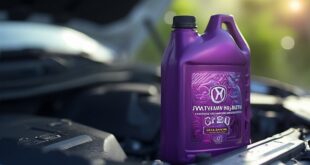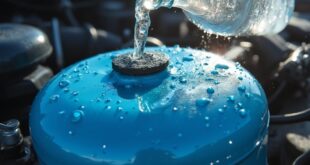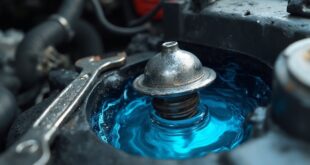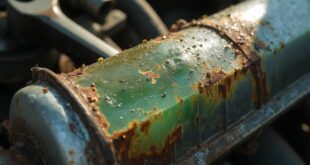If both your headlights stopped working, it could be due to a few common issues. You might have bad bulbs, faulty wiring, or a blown fuse. The headlight switch or relay might also be malfunctioning, which limits power flow. Corrosion at sockets can disrupt connections too. These problems reduce visibility, increasing safety risks on the road. For more details on troubleshooting and preventing future issues, keep exploring the key factors involved.
Common Causes of Headlight Malfunctions
When headlights stop working, it can be frustrating and dangerous. Common causes include bad bulbs, faulty wiring, or blown fuses.
If the bulbs are burned out, you might just need replacements. Damaged wires can disrupt power, often due to wear or even rodent damage.
Additionally, a blown fuse can cut the electrical flow, so check the fuse box. Sometimes, corrosion at bulb sockets or connections leads to failures.
Environmental factors, like moisture or debris, can also contribute to headlight issues. Identifying these problems early can save you from more extensive repairs down the road.
The Role of Headlight Switch and Relay
Identifying the common causes of headlight malfunctions sets the stage for understanding the critical role of the headlight switch and relay in your vehicle's lighting system.
The headlight switch controls the on/off function and different lighting modes, while the relay guarantees power flows to the bulbs for low and high beams. If either component fails, you may experience complete headlight loss.
A malfunctioning switch can prevent your headlights from working altogether, while a faulty relay can cause both lights to go out simultaneously.
Regular checks on these components can help maintain reliable lighting and guarantee safe driving at night.
Importance of Checking Bulbs and Sockets
Regularly checking your headlight bulbs and sockets is vital for guaranteeing ideal visibility on the road.
Burnt-out bulbs or corroded sockets can lead to dim or non-functional headlights, putting you at risk during nighttime driving. It's important to inspect bulbs for any signs of damage and verify they're the correct type for your vehicle.
Additionally, check sockets for corrosion or dirt, as these can disrupt electrical connections.
Understanding Electrical Wiring Issues
Electrical wiring issues can sneak up on you, often leading to frustrating headlight malfunctions.
Damaged or worn wires can disrupt connections, causing both headlights to fail. Rodents may chew through insulation, creating additional problems. Corroded connections from heat exposure can also result in poor conductivity, further complicating matters.
Regularly inspecting your wiring helps catch these issues early. If you notice flickering lights or sudden failures, it's crucial to check for visual signs of wear or damage.
Addressing wiring problems promptly can save you from more extensive repairs and guarantee your headlights function reliably when you need them most.
Diagnosing Blown Fuses and Compatibility
When your headlights suddenly stop working, checking for blown fuses should be one of your first steps.
Locate the fuse box in your vehicle and identify the headlight fuse. If it's blown, replace it with a compatible fuse of the same amperage. Remember, using the wrong fuse can lead to further electrical issues.
If replacing the fuse doesn't solve the problem, you may need to inspect the headlight bulbs for compatibility. Confirm you're using the correct type, whether halogen, Xenon, or LED, as using the wrong bulbs can prevent proper functioning.
Always prioritize proper compatibility to avoid future headaches.
Environmental Factors Affecting Headlights
After addressing blown fuses and ensuring compatibility with your headlight bulbs, it's important to contemplate how environmental factors can impact your headlights' performance.
Moisture can seep into headlight assemblies, leading to electrical failures and fogging. Dirt and debris can accumulate, obstructing light output and reducing visibility. Extreme temperatures can also affect the integrity of components, causing them to wear prematurely.
Additionally, road salt and chemicals can corrode connections, further complicating your headlights' functionality. Regularly inspecting and cleaning your headlights can help mitigate these effects, ensuring they operate effectively in varying conditions and keeping you safe on the road.
Safety Risks of Non-Functional Headlights
Driving without functional headlights poses significant safety risks, as it drastically reduces your visibility at night and during poor weather conditions.
You may struggle to see road signs, pedestrians, or obstacles, increasing the likelihood of accidents. Other drivers won't see you either, putting you at risk of collision.
Non-functional headlights can also attract police attention, leading to potential fines.
Additionally, driving in darkness without proper lighting can make you feel disoriented and anxious, impairing your judgment.
To guarantee your safety and that of others, it's essential to address headlight issues immediately and avoid driving until they're fixed.
Maintenance Tips for Headlight Longevity
To confirm your headlights last as long as possible, regular maintenance is key.
Follow these tips to keep them shining bright:
- Check and replace burnt-out bulbs promptly.
- Inspect wiring and connections for signs of wear or corrosion.
- Clean headlight lenses with a restoration kit to maintain clarity.
- Test your headlight switch regularly to verify proper function.
Frequently Asked Questions
Can Weather Conditions Affect Headlight Performance?
Yes, weather conditions can affect headlight performance. Rain, snow, or fog can reduce visibility, while extreme temperatures may cause electrical issues. Regular maintenance helps guarantee your headlights function at their best in varying weather conditions.
How Often Should I Inspect My Headlights?
You should inspect your headlights at least once a month. Regular checks help catch issues early, ensuring safe driving conditions. Don't forget to look at wiring and bulbs for any signs of wear or corrosion.
Are LED Headlights More Reliable Than Halogen?
LED headlights are generally more reliable than halogen. They last longer, use less energy, and provide better visibility. If you're looking for durability and efficiency, you should definitely consider upgrading to LED headlights.
What Tools Do I Need for Headlight Repairs?
For headlight repairs, you'll need a multimeter to test electrical connections, a socket wrench for removing components, wire strippers for damaged wiring, and contact cleaner for corroded sockets. These tools will simplify your repair process.
Can Headlight Issues Drain My Car Battery?
Yes, headlight issues can drain your car battery. If headlights stay on inadvertently or have electrical faults, they might continue to draw power, leading to a dead battery. Always check for proper functionality to avoid this.
 Car Service Land Coupons for Oil change, Tires, Wheel alignment, Brakes, Maintenance
Car Service Land Coupons for Oil change, Tires, Wheel alignment, Brakes, Maintenance




